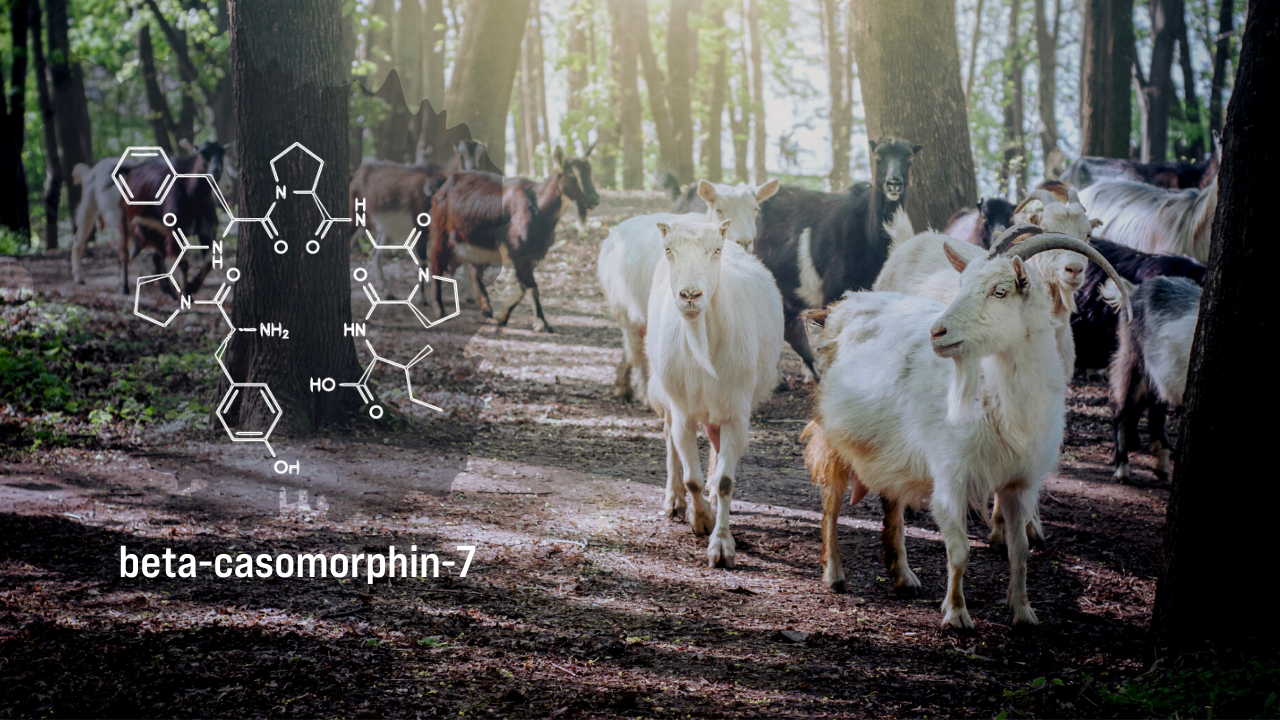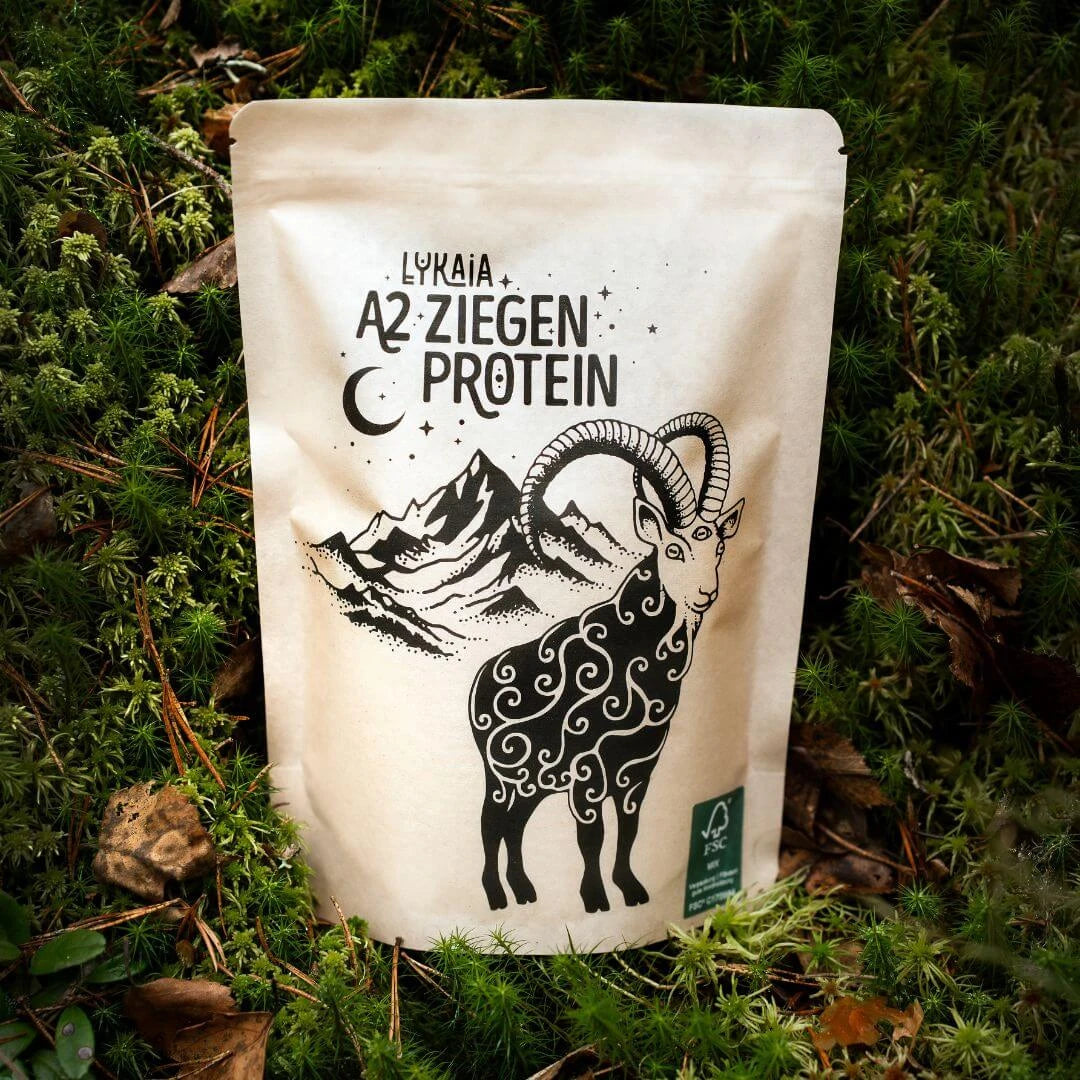Why is A2 milk healthier?


An article about milk and A2 casein
The bag cow from the supermarket
In the supermarket, the majority of the refrigerated shelves are filled with cow's milk products, which for most of us are a regular, daily part of our diet in some form. Milk production has had to cope with this high demand over the last few decades. The days when everyone is greeted by their own cow outside the window in the morning and draws their own fresh glass of milk are long gone. The milk supply from regional farms in the area is also hardly used anymore - what if you live in the middle of the city center without a car? Milk from the supermarket delivered by large companies - none of this would be a problem if something hadn't gone wrong when scaling milk production.
It starts with the cow
“The brown people give cocoa,” my father told me when I was on holiday in Austria with my parents as a child. Easy to believe if it weren't for the purple cow on the Milka pack, which is nowhere to be found. But cocoa or not, the milk from cows of the original cow breed was excellent and it had to be, because it was intended exclusively for the calf that would one day grow up big and strong. In the past, a cow gave around 8 liters of milk per day. Today it is up to 50 liters. Yikes. What has happened there? The most productive dairy cows were picked out and repeatedly crossed with each other. Again and again for many years until we finally got a high-performance cow whose sole purpose in life today is the mass production of milk.

These cows serve our dairy industry and enable the average German consumer to consume a full 50 liters of milk and 25 kg of cheese every year ( Federal Institute for Agriculture and Food 2018 ).
Unfortunately, with such quantities, quantity takes precedence over quality and the conditions in which dairy cows are kept deteriorate considerably. This is not only terrible for the animals, but also for us. A free, happily grazing cow produces much more nutrient-rich milk than a cow behind bars in a crowded stable. But it's not just the nutrient density of milk that has deteriorated due to high-breeding culture, the structure and ratio of the proteins it contains have also changed. This particularly affects the casein protein in milk.
What is casein?
The two most important proteins from milk that we can use are the so-called whey protein (popular among strength athletes and known as “whey protein”) and casein, which is used, among other things, to make cheese and low-fat quark products. As you may have noticed yourself: after half a kilogram of low-fat quark or a hearty cheese platter, you'll be full for quite a long time. Why is that? Apart from the fact that natural whole milk or full-fat cheese saturates for longer than half-fat products, precisely because of the full fat content - it is due to the milk casein. Casein is absorbed by your body over a longer period of time compared to whey protein (whey). Your body needs around 30-60 minutes to utilize the protein structures of whey protein and at least 140 minutes for casein.
So what takes longer to digest usually makes you feel full longer, because if your body is still busy digesting a certain food, it won't scream for new food straight away. That's why I started supplementing whey protein with casein in my competition diet. Of course, you can get by without all these powders with an unprocessed and balanced diet. But satiety isn't necessarily something you experience when you're on a diet. A diet richer in protein can counteract the feeling of hunger.

Now what's the problem with the casein?
There are different variants of casein. Due to our cow breeding culture, today's dairy cow is genetically far removed from the original cattle breeds. This is how it happened that the original casein protein mutated in its so-called A2 beta structure into an A1 casein protein. Today there are only a few British Jersey and Guernsey cows left that produce pure A2 milk. Most cows are mixed types or only produce milk with A1 casein protein. Unfortunately, this also includes conventional milk from the supermarket.
The mutation from A2 to A1 casein happened faster than our digestive system could adapt to this new structure. The difference between A1 and A2 casein is precisely that A1 casein is very difficult for us to digest and is therefore poorly tolerated. Things that are difficult to digest put stress on your intestines and so it can happen that your intestinal lining becomes more permeable if there is too much stress. Some people may nod in agreement because they have known about the “leaky gut” syndrome for a long time and are doing everything they can to keep their intestinal flora in check.
A1 Casein and highly processed dairy products can stress your intestines and because a leaky intestine allows more to pass through, it no longer distinguishes as accurately between good and bad components in the food you eat. These then enter the bloodstream more quickly and can also attack your immune system. Studies on A1 casein and intestinal health showed that gastrointestinal complaints occur when consuming A1 dairy products, but not when consuming A2 dairy products. (Brooke-Taylor et al. 2017; He et al. 2017; Jianqin et al. 2016)
And just to say it in advance, A1 casein remains A1 casein, regardless of whether it is milk and low-fat quark or the dry cow. So if you regularly scoop up cheap casein powder, you won't be doing your gut any good. Unfortunately, I also had to notice this in the competition diet. Long periods of satiety don't help when you look like you're five months pregnant in the evening because you're so bloated.
And A2 casein doesn't do anything to the intestines?
Of course, the tolerance of milk and dairy products is still individual, like every nutritional issue. General statements cannot be made here. But A2 casein is at least broken down differently by our intestines than A1 casein and is therefore considered more digestible. You can find out exactly how this works in the intestine in the blog article “Depending on the cow”. Unfortunately, today there are only a few breeds of cattle (British Jersey and Guernsey cows) that produce pure A2 milk. Most cows are mixed types or only produce milk with A1 casein protein. Sheep and goat milk, on the other hand, produce almost exclusively A2 milk. This is one reason why we use casein from goat's milk in our products.
What can you do?
So if you tend to consume a lot of milk and dairy products and occasionally suffer from digestive problems, you might be doing something good for your body if you do option 1 - reduce dairy products (perhaps you also have lactose intolerance), or option 2 - reduce the quality of your dairy products pay attention. High-quality dairy products come from pasture-raised animals and are ideally already pre-fermented, such as natural yogurt, kefir or cheese. These are products that have already undergone a certain amount of maturation and are therefore easier for your body to digest. They already contain larger amounts of lactic acid and intestinal-friendly probiotics. You can also consciously rely more on goat and sheep's milk products, which certainly contain A2 casein and have many other advantages over cow's milk products.

Rob the cow
Of course, we can also do without dairy products at all, because milk consumption is actually intended exclusively for children. We don't drink breast milk anymore either. But babies need the nutrients from the milk that they cannot yet extract themselves in order to quickly become big and strong, i.e. to grow quickly. As a rule, we no longer have to do that and dairy products often cause completely different things to grow in us, which are undesirable, such as pimples or perhaps tumors. Even if the latter is not yet known exactly, certain types of milk are suspected of triggering acne or making it worse ( Dai et al. 2018; Ulvestad et al. 2017 ).
So less is sometimes more here too, but strict avoidance is probably not necessary as long as you pay attention to the quality and origin of your products. There is nothing wrong with a well-ripened organic yogurt with live probiotics. This will do your microbiome more good than harm.
bibliography
Brooke Taylor, Simon; Dwyer, Karen; Woodford, Keith; Kost, Natalya (2017): Systematic Review of the Gastrointestinal Effects of A1 Compared with A2 β-Casein. In: Advances in nutrition (Bethesda, Md.) 8 (5), pp. 739–748. DOI: 10.3945/an.116.013953.
Federal Office for Agriculture and Food (2018): Report on the market and supply situation for milk and milk products.
Dai, R.; Hua, W.; Chen, W.; Xiong, L.; Li, L. (2018): The effect of milk consumption on acne: a meta-analysis of observational studies. In: Journal of the European Academy of Dermatology and Venereology: JEADV 32 (12), pp. 2244–2253. DOI: 10.1111/jdv.15204.
Hey, Mei; Sun, Jianqin; Jiang, Zhuo Qin; Yang, Yue Xin (2017): Effects of cow's milk beta-casein variants on symptoms of milk intolerance in Chinese adults: a multicentre, randomized controlled study. In: Nutrition journal 16 (1), p. 72.
Jianqin, Sun; Leiming, Xu; Lu, Xia; Yelland, Gregory W.; Ni, Jiayi; Clarke, Andrew J. (2016): Effects of milk containing only A2 beta casein versus milk containing both A1 and A2 beta casein proteins on gastrointestinal physiology, symptoms of discomfort, and cognitive behavior of people with self-reported intolerance to traditional cows' milk . In: Nutrition journal 15, p. 35.
Ulvestad, M.; Bjertness, E.; Dalgard, F.; Halvorsen, JA (2017): Acne and dairy products in adolescence: results from a Norwegian longitudinal study. In: Journal of the European Academy of Dermatology and Venereology: JEADV 31 (3), pp. 530–535. DOI: 10.1111/jdv.13835.
0 comments







